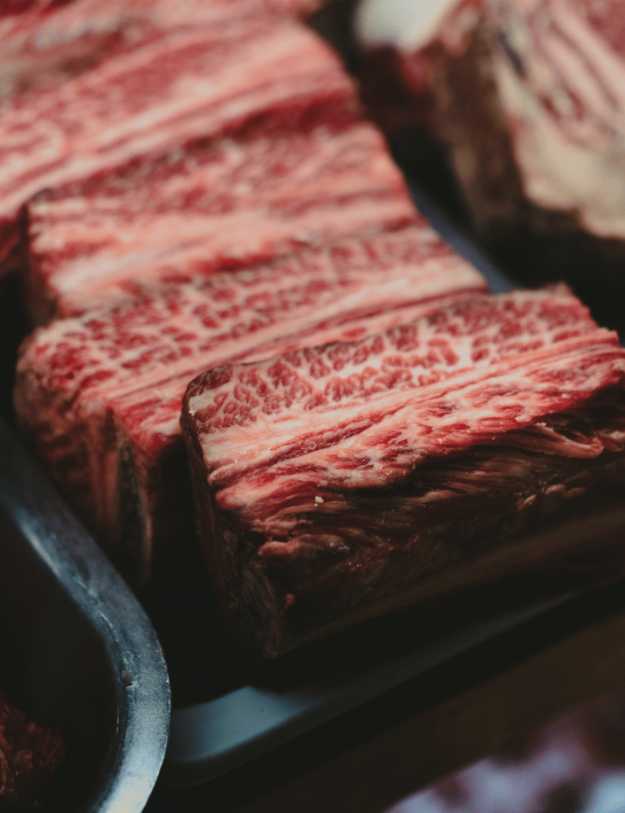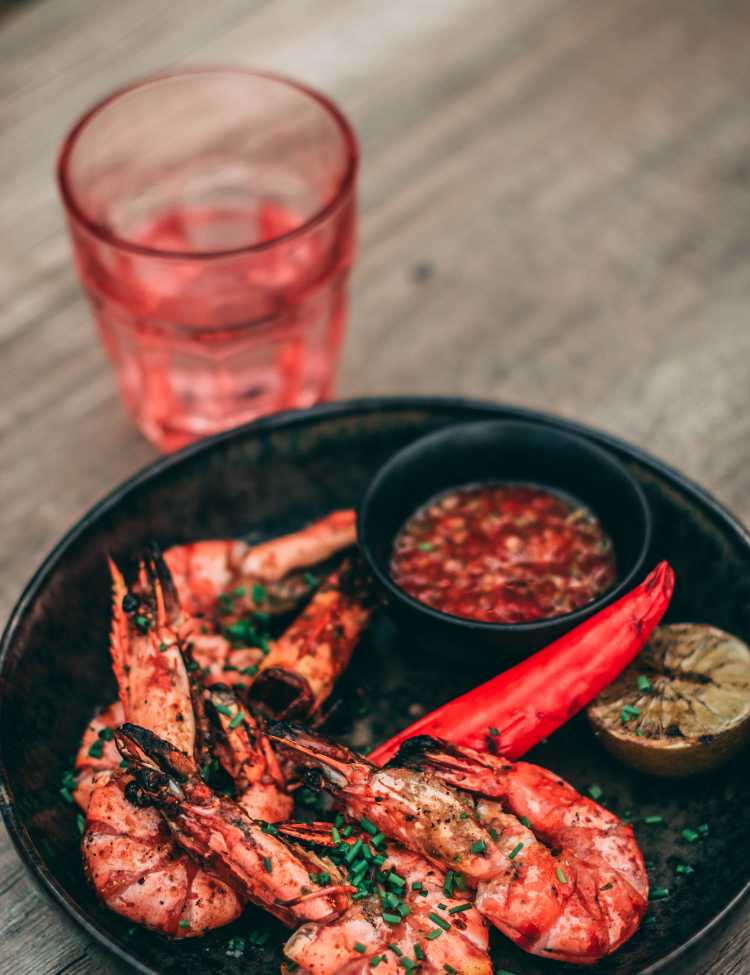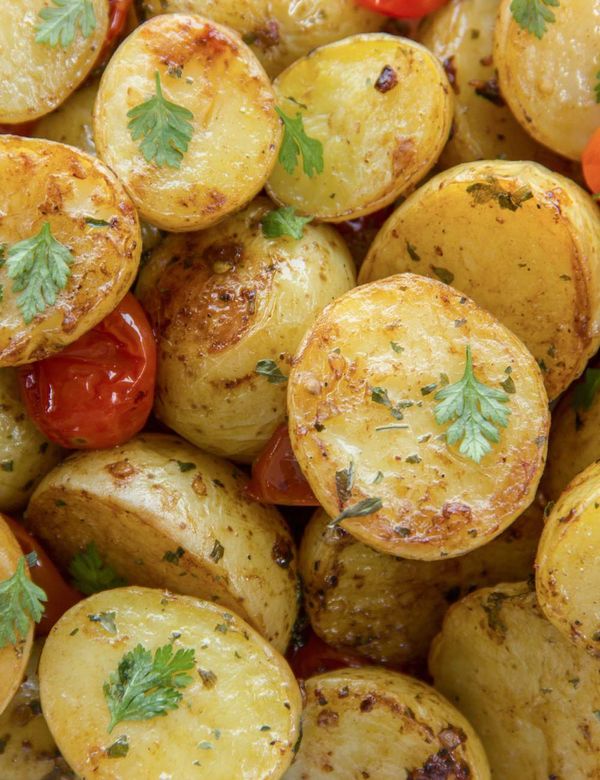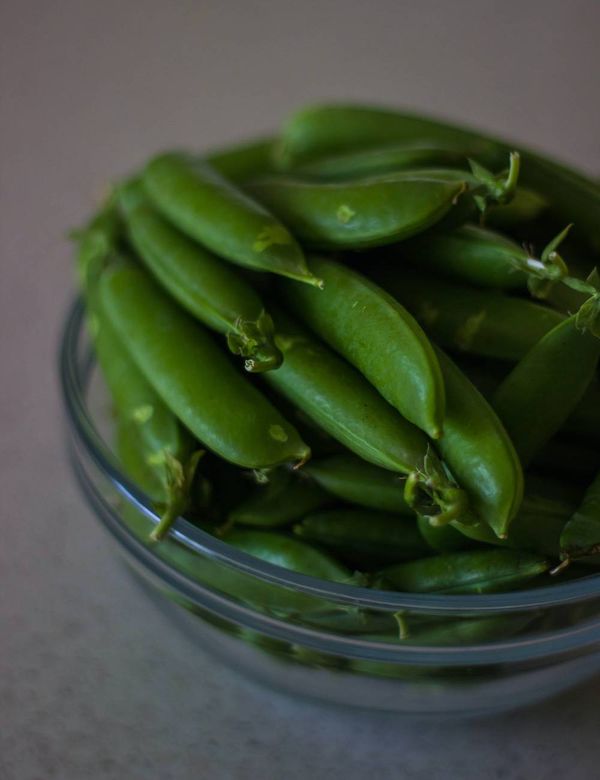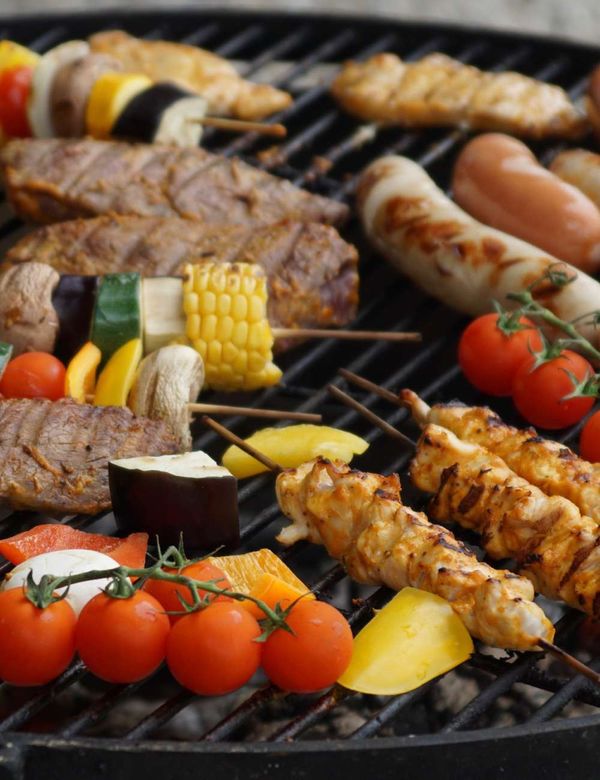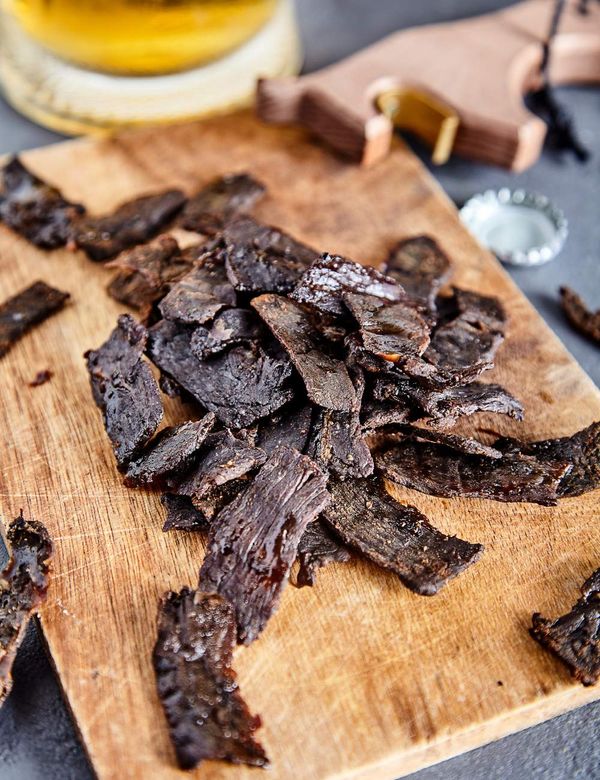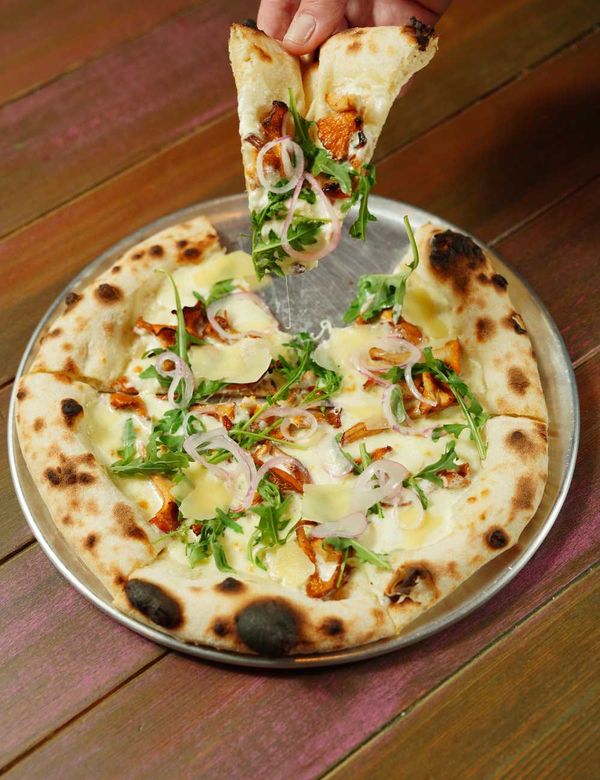Are you a fan of delicious and perfectly cooked beef ribs?
If so, then you're in for a treat!
We've gathered the most creative techniques for cooking tasty beef ribs that will tantalize your taste buds.
From stovetop toasting to baking in your oven, there's something here for everyone!
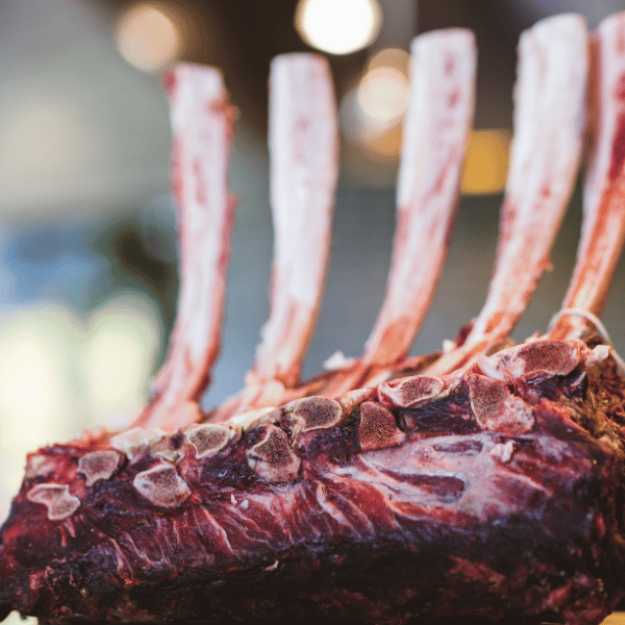
And did we mention that all of these recipes only take minutes to prepare?
Yes - making delectable beef ribs can now be done quickly and easily.
Get ready to experience an explosion of flavor with every bite – juicy, tender meat marinated with herbs and spices; smoky flavors enhanced by charcoal grilling; glazed caramelization from sweet barbecue sauce.
Your family is sure to come back asking for more after each meal!
Check out our informative guide on how to cook the best beef ribs today!
Key Points
•Choosing the right cut of beef ribs is crucial, look for meaty and well-marbled ribs.
•Preparing the ribs properly by trimming off any excess fat or membrane, and seasoning them with a dry rub or marinade.
•Slow cooking the ribs over low heat, whether in the oven or on a grill, to ensure tenderness and flavor development.
• Let the ribs rest for a few minutes before slicing and serving to allow the juices to redistribute throughout the meat.
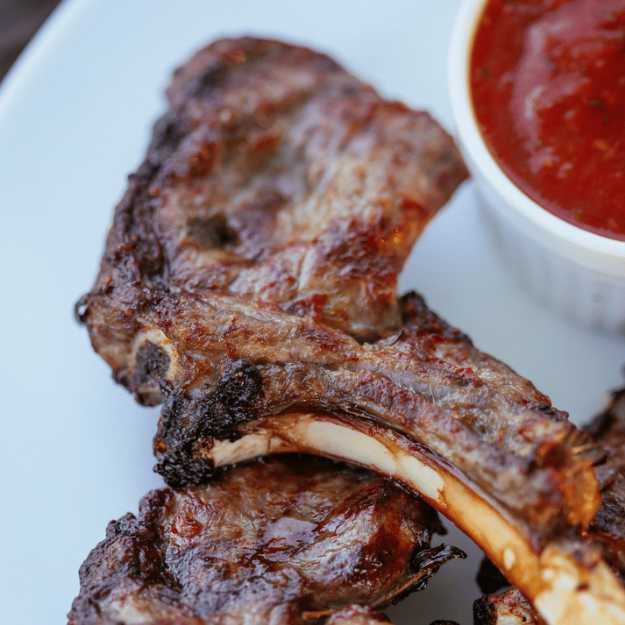
Choosing the Best Cut of Beef Ribs for Your Recipe
Choosing the best cut of beef ribs is crucial when it comes to cooking delicious and tender ribs.
There are two main options to choose from: back ribs or short ribs.
Back ribs, also known as baby back ribs, come from the upper part of the rib cage and have relatively lean meat with small bones.
On the other hand, short ribs come from the lower part of the rib cage and have higher marbling and larger bones.

This makes them a great option for slow-cooking methods like braising.
When choosing the best cut of beef ribs for your recipe, consider the cooking method you will use and the level of marbling you prefer.
Make sure to select fresh, high-quality beef ribs from a trusted butcher or grocery store for the best results.
Preparing Your Beef Ribs: Trimming, Seasoning, and Marinating
Properly preparing your beef ribs is essential to achieve delicious, tender, and flavorful results.
Start by trimming any excess fat from the ribs, which will help prevent flare-ups and ensure even cooking.
Next, season your beef ribs with your favorite dry rub or marinade.
If using a dry rub, make sure to apply it generously to all sides of the meat and let it sit on the ribs for at least an hour before cooking.
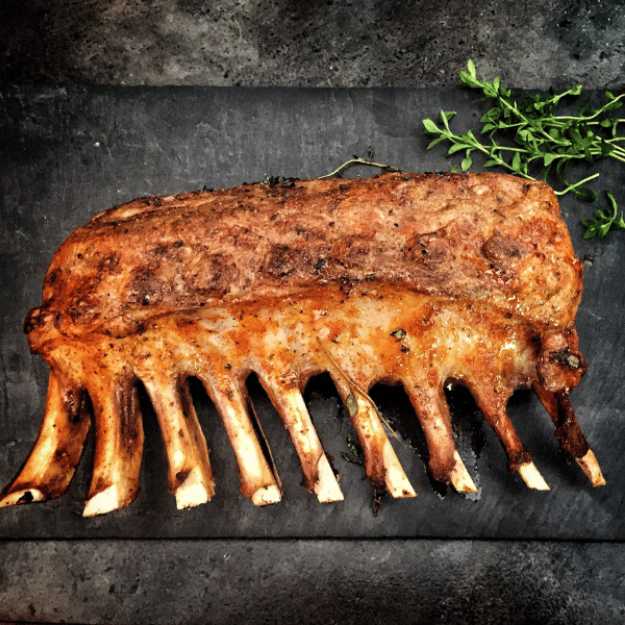
If you prefer to marinate your beef ribs, allow them to sit in the marinade for several hours or overnight in the refrigerator to infuse more flavor into the meat.
When marinating, use a non-reactive container, such as glass or plastic, and discard any leftover marinade to avoid contamination.
By taking the time to properly trim, season, and marinate your beef ribs, you'll end up with mouth-watering ribs that are sure to impress your guests.
Low and Slow: The Best Cooking Techniques for Beef Ribs
Low and slow cooking is the best technique for cooking beef ribs to achieve tender, juicy, and fall-off-the-bone meat.
There are two main cooking techniques that work well with beef ribs: smoking and braising.
Smoking involves cooking the beef ribs over low heat and smoke for several hours until the meat is tender and infused with smoky flavor.
Braising, on the other hand, involves searing the beef ribs in a hot pan or grill first, then cooking them slowly in a flavorful liquid, such as broth or wine, until the meat is fork-tender.

Both methods require patience and attention, as beef ribs can take anywhere from 3 to 6 hours to cook properly.
It's important to monitor the temperature of your smoker or oven and adjust it as needed to maintain a consistent temperature.
With the low and slow cooking technique, you'll end up with the most delicious, melt-in-your-mouth beef ribs you've ever tasted.
The Importance of Temperature Control When Cooking Beef Ribs
Temperature control is crucial when cooking beef ribs to ensure that they cook evenly and reach the desired level of doneness.
Whether smoking or braising, it's important to maintain a consistent temperature throughout the cooking process to prevent overcooking or undercooking the meat.
When smoking beef ribs, the ideal temperature range is between 225-250°F, while braising requires a slightly higher temperature of around 325°F.
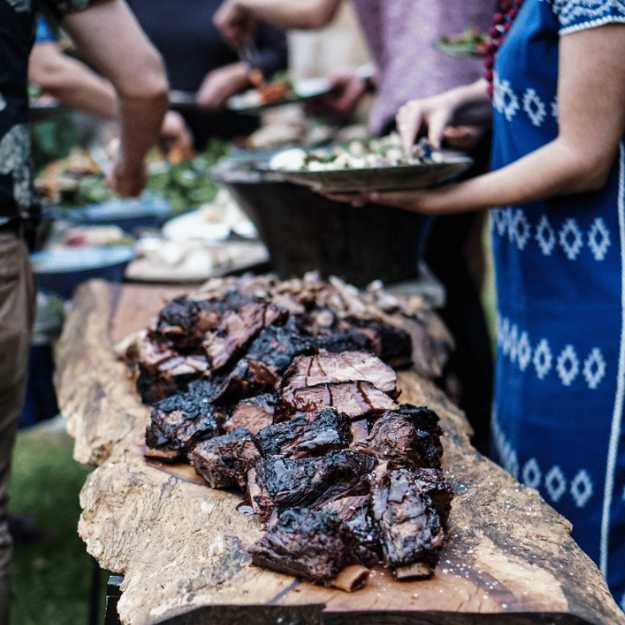
It's important to use a reliable meat thermometer to check the internal temperature of the meat, which should be around 185-200°F for beef ribs.
Additionally, if cooking on a grill or smoker, make sure to arrange the coals or wood chips in a way that provides indirect heat to the meat to avoid burning or charring the ribs.
By controlling the temperature throughout the cooking process, you'll end up with perfectly cooked, succulent beef ribs every time.
Basting and Mopping: Adding Flavor to Your Beef Ribs
Basting and mopping are popular techniques used to add more flavor and moisture to beef ribs during the cooking process.
Basting involves brushing a layer of sauce, marinade, or melted butter onto the ribs every hour or so while they cook on the grill or smoker.
This helps to keep the meat moist and infuse it with additional flavor.
Mopping, on the other hand, involves using a mop sauce, which is a thin liquid made from vinegar, broth, or beer, to baste the ribs.

This technique not only adds flavor but also helps tenderize the meat by breaking down the connective tissue.
To use either technique, simply brush or mop the meat with your chosen liquid every 45 minutes to an hour, being careful not to disturb the bark that has formed on the meat.
With basting and mopping, you'll be able to take your beef ribs to the next level of flavor and tenderness.
Tips and Tricks for Grilling Beef Ribs to Perfection
Grilling beef ribs can be a bit tricky, but with a few tips and tricks, you can achieve perfectly cooked ribs every time.
Start by preheating the grill to medium-high heat and oiling the grates to prevent sticking.
When grilling beef ribs, it's essential to follow the 2-zone setup, which means creating a direct heat zone for searing the meat and an indirect heat zone for slow cooking.
Sear the ribs on the direct heat zone for a few minutes on each side to get a nice crust, then move them to the indirect heat zone to finish cooking slowly.
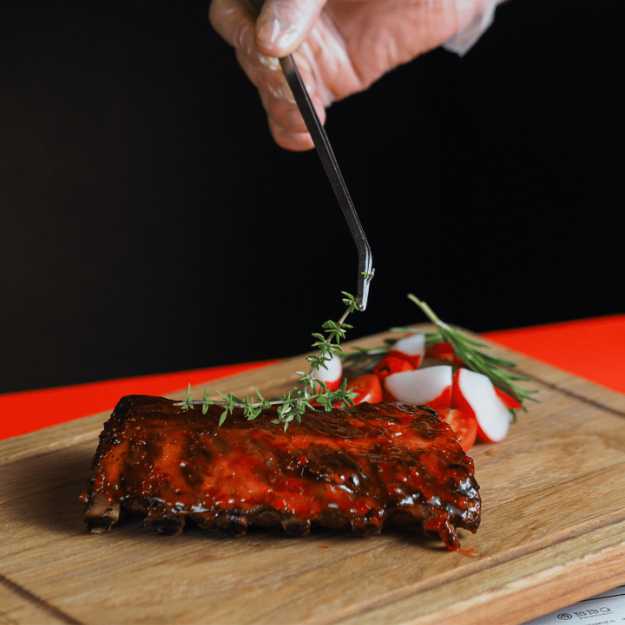
To avoid burning the meat, keep the lid closed as much as possible and check the temperature regularly using a meat thermometer.
As the ribs cook, baste or mop them with your chosen liquid every hour to add flavor and moisture.
Finally, let the ribs rest for at least 10 minutes before serving to allow the juices to redistribute throughout the meat.
By following these tips and tricks, you'll be able to grill the most incredible beef ribs for your next BBQ party.
Oven Cooking vs. Smoking: Which Method is Right for Your Beef Ribs?
Choosing between oven cooking and smoking depends on your preference, time, equipment, and desired outcome.
Oven cooking can be a convenient and accessible method for cooking beef ribs, especially if you don't have a smoker or grill.
You can cook the ribs in the oven at a low temperature between 275-300°F for several hours until they are tender and juicy.
However, oven-cooked beef ribs won't have the same smoky flavor and bark that smoking provides.
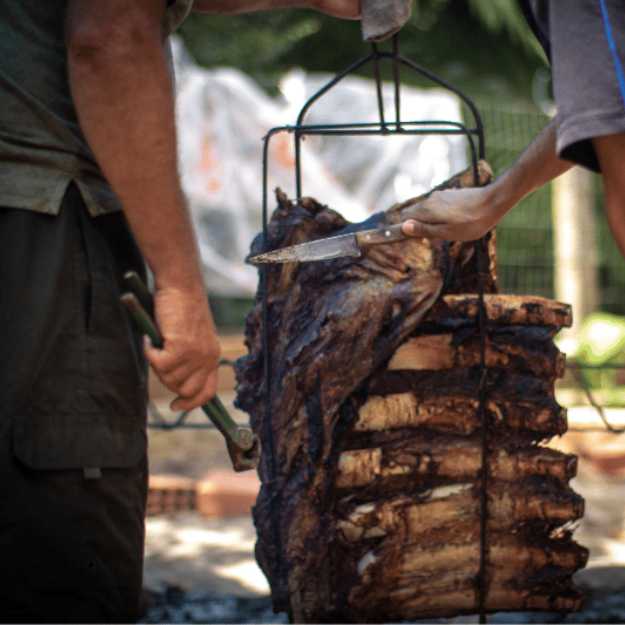
Smoking, on the other hand, is a more traditional and authentic way of cooking beef ribs that infuses the meat with smoky flavor while keeping it tender and moist.
Smoking requires specialized equipment, such as a smoker or grill, and takes longer than oven cooking.
If you have the time, equipment, and desire for a smoky flavor, smoking is the way to go.
However, if you're short on time or prefer convenience, oven cooking can still yield delicious and tender beef ribs.
How to Tell When Your Beef Ribs are Done Without Overcooking
It essential to cook your beef ribs until they are done, but not overcooked, to ensure they're tender and juicy.
One way to tell when your beef back ribs are done is to use a meat thermometer to check the internal temperature of the meat.
For beef ribs, the ideal temperature range is between 185-200°F.
However, if you don't have a meat thermometer, you can also use the bend test or the toothpick test.
The bend test involves picking up the ribs with tongs and seeing if they bend easily without breaking.
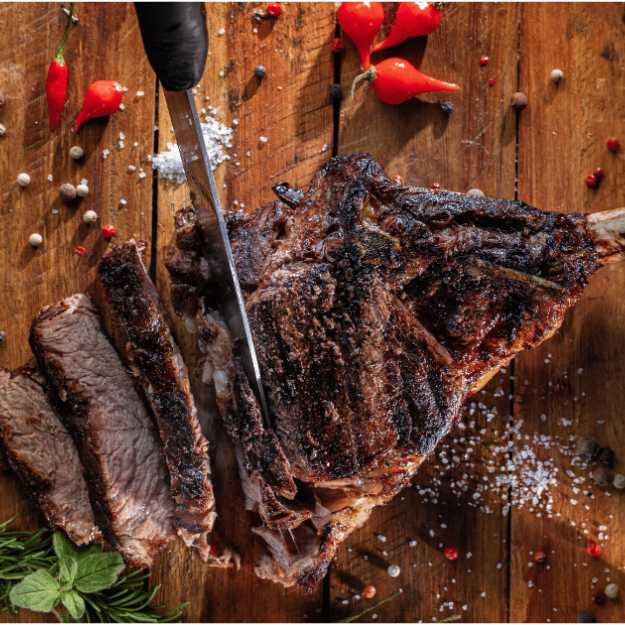
If they bend nicely, they're likely done.
If they're still stiff, they need more time.
The toothpick test involves inserting a toothpick into the thickest part of the meat and seeing if it slides in and out easily.
If it does, the ribs are likely done.
If not, they need more time.
By using these methods, you'll be able to tell when your beef ribs are done without overcooking them, resulting in perfectly cooked, succulent meat.
Resting Your Beef Ribs: Why It's Crucial for Maximum Flavor and Tenderness
Resting your beef ribs is crucial for maximum flavor and tenderness.
When you take the meat off the grill or smoker, it's still hot and filled with juices.
Resting allows the meat to cool down and the juices to redistribute throughout the meat evenly.
If you cut into your beef ribs too soon before they've had a chance to rest, the juices will run out, and you'll end up with dry, tough meat.
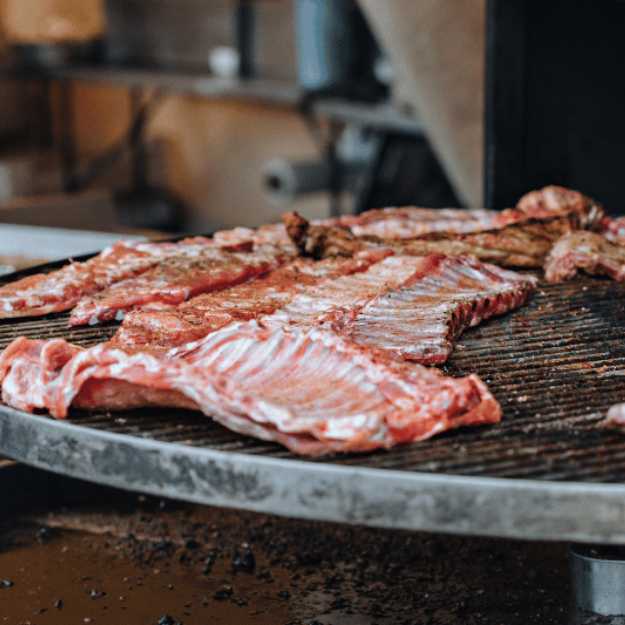
Letting the ribs rest for at least 10 minutes (or up to 30 minutes for larger cuts) allows the flavor and tenderness to develop further while keeping the moisture locked in.
During the resting period, cover the beef ribs loosely with foil to keep them warm.
You'll be rewarded with perfectly cooked, succulent, and flavorful beef ribs that will be the star of your next BBQ party.
Serving Your Beef Ribs: Creative Ways to Plate and Garnish Your Dish
Serving your beef ribs can be just as important as cooking them.
There are many creative ways to plate and garnish your dish to make it look and taste even better.
One popular way to serve beef ribs is family-style on a large platter with a variety of side dishes.
Try adding some colorful roasted vegetables, such as bell peppers, zucchini, and carrots, or some creamy coleslaw or potato salad.
Another creative way to plate your beef ribs is to stack them up in a tower-like formation, drizzled with your favorite bbq sauce or glaze.
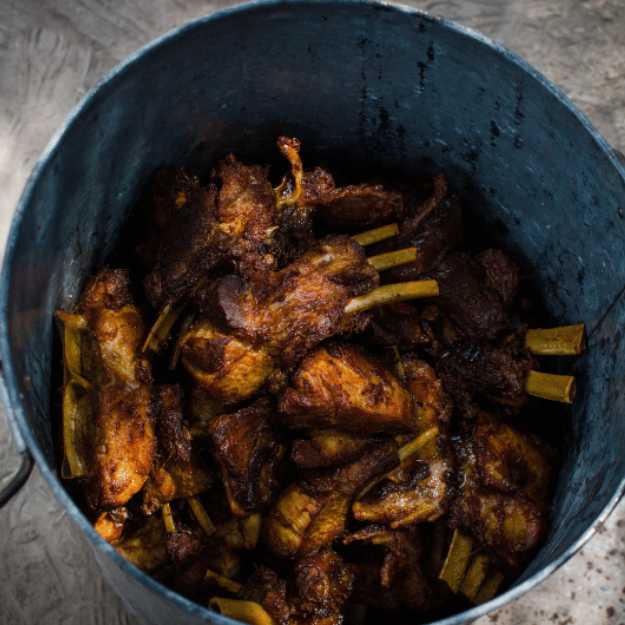
You can also add some fresh herbs, like parsley, cilantro, or rosemary, for an additional pop of color and flavor.
Another way to serve beef ribs is to shred the meat and use it in tacos, sandwiches, or sliders.
Add some tangy pickles, crispy onion rings, or spicy jalapenos for a unique twist on this classic dish.
No matter how you choose to plate and garnish your beef ribs, get creative, and have fun with it!
Ways to Cook Beef Ribs That Will Make You Drool: FAQ Section
Getting the perfect beef ribs can be a challenge.
Have you ever been unsure of what temperature to cook them at, or how long to let them rest?
You’ve tried searching online for the answer and all you found was conflicting information.
Stop the guesswork and get your answers fast and easy with our FAQ section.
Our experienced chefs have put together a comprehensive list of questions and answers that will help you cook the best beef ribs every time!
What are the best cuts of beef ribs for grilling or smoking?
When it comes to grilling or smoking beef ribs, some of the best cuts are flanken-style beef short ribs, St. Louis cut spare ribs, English-style short ribs and Denver cut short ribs.
Flanken-style short ribs are thin pieces of bone-in rib meat that are crosscut and have a very intense flavor due to their marbling.
St. Louis cut spareribs have more fat content than other rib cuts and will produce a juicy rack with nicely flavored bark when grilled or smoked correctly.
How do I prepare beef ribs for cooking? Do I need to trim the fat?
Preparing beef ribs for cooking is simple and a great way to ensure a delicious meal.
Start by preheating your oven or charcoal grill to the desired temperature.
Trimming some of the fat from the rib can help reduce any strong flavor, as well as help keep it moist and tender while cooking.
Next, season your ribs with salt and pepper or other favorite spices.
To ensure that any excess fat melts off during cooking, place foil on top of your baking sheet (or use an aluminum pan when using a grill).
Should I marinate beef ribs before cooking them? If so, what is the best marinade recipe?
Yes, you should marinate beef ribs before cooking them for maximum flavor and tenderness.
The best marinade recipe will depend on the type of dish you are making, but generally speaking a simple combo of vinegar (white wine or balsamic), oil (extra virgin olive oil or canola oil), herbs/spices(garlic, oregano, thyme etc.), chili flakes and salt is usually enough to form the basis of most marinades for beef ribs.
Add this marinade to any of your favorite beef ribs recipe
What is the best temperature to cook beef ribs at? How long should I cook them for?
The optimal temperature for cooking beef ribs is 350°F (177°C).
Cook them for approximately 25 minutes per pound, or until the internal temperature measures at least 145°F (63°C).
Make sure to keep a close eye on your ribs while they cook by periodically checking the internal temperature with a digital thermometer.
What is the difference between beef ribs and pork ribs?
Beef ribs and pork ribs are both delicious cuts of meat that come from animals, but they are different in several ways.
Beef ribs come from cows while pork ribs come from pigs.
The amount of fat varies between the two types; beef has more marbling, which gives it a richer flavor, whereas pork tends to be leaner.
In terms of texture, beef is known to be firm and chewy whereas pork can be tender and succulent.
How do I know when my beef ribs are done cooking? Can I use a meat thermometer?
When cooking beef ribs, the best way to know when they are done is to use a digital probe thermometer.
The recommended internal temperature for cooked beef ribs is 145°F (63°C).
Insert the tip of the thermometer into the thickest part of the rib away from bone or fat and check that it registers at least 145°F (63°C).
What are some good side dishes to serve with beef ribs?
Beef ribs are a great main dish that can be accompanied by a wide range of side dishes.
A classic pairing for beef ribs is mashed potatoes, as the creamy texture and flavor of the potatoes play nicely off of the smoky flavors in the ribs.
How do I store leftover beef ribs? Can I freeze them?
Yes, you can freeze beef ribs for up to three months.
Before freezing them, they need to be properly prepared and packaged. First of all, make sure to trim any excess fat or gristle off the beef ribs.
Then season the bbq ribs with salt and pepper and wrap them in foil or plastic wrap tightly so that no air can escape.
Place the wrapped ribs into a freezer-safe container or resealable bag before transferring them to your freezer on a rimmed baking sheet where they should be stored at 0°F (-18°C).
Can I make beef ribs in the oven or on the stovetop?
Yes, you can make oven-baked ribs in the oven or on the stovetop.
For oven-baked beef ribs, preheat your oven to 300°F and season the ribs with your favorite spices.
Place them on a rack in a baking dish that is about half-filled with water and cover tightly with foil.
Bake for 2 1/2 - 3 hours until tender.
To make stovetop beef ribs, heat a deep skillet or Dutch oven over medium-high heat then add enough oil to coat the bottom of the pan and add in the seasoned ribs.
Do I need to remove the membrane from the back of the beef ribs before cooking them?
Yes, you should remove the membrane from beef ribs before cooking them as it will create a much juicier and flavorful rib.
Removing the membrane also allow for better seasoning mix of the rib and helps to avoid a chewy texture.
To remove the membrane, use a sharp knife to loosen one edge of it before peeling off with your fingers or paper towel.
Can I use a dry rub on beef ribs, and if so, what is the best recipe for a dry rub?
Yes, you can use a dry rub on bbq beef ribs and there are lots of great recipes out there.
One of the best is Gary's Savory Beef Ribs Dry Rub.
This recipe combines garlic powder, onion powder, brown sugar, smoked paprika, cumin, kosher salt and black pepper to create a savory rub that adds tons of flavor to your ribs.
To make this dry rub just combine all the ingredients together in a small bowl and mix until they are well combined.
The Best Way to Cook Beef Ribs!
Delicious beef ribs are a great way to impress your guests!
Whether you decide to use a dry rub, grill or oven-roast your ribs, following the steps in this article will ensure that they come out tender and full of flavor.
With the perfect combination of the right ingredients and cooking techniques, you can transform an ordinary cut of meat into something extraordinary.
Who knew cooking could be so simple?
We hope we've been able to provide some helpful tips for creating tasty rib recipes that you'll be proud to show off.
Check out our other related articles and subscribe today so you never miss another post!

